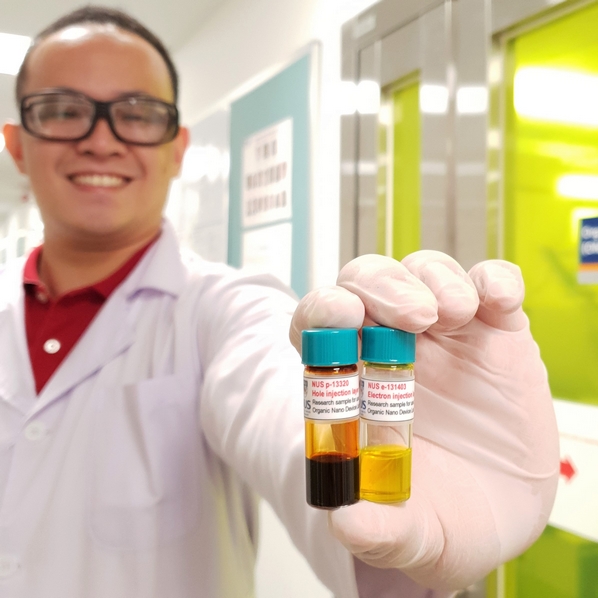|
Universal latent anion donors for ultralow work function solution-processable electrodes
04/10/2019. ONDL scientists recently reported in Nature their work on ambient stable, solution-processable ultralow work function electron injection layers. Electron injection layers into novel semiconductor layers should ideally have low workfunctions (around 2 to 4 eV); the workfunction of a material is the amount of of energy required to remove the least tightly bound electron from that material. These electron injecting layers were typically made by evaporating low workfunction metals such as calcium at high temperatures and vacuum, which firstly limits device architecture and processability, and secondly is prone to degradation in ambient conditions.
The team has demonstrated their high-performance, solution-processed electron injection/extraction layers in white light emitting diodes and organic solar cells by extending and leveraging on their work on self-compensated charge-doped polymers three years ago. Using common multivalent anions such as oxalate, carbonate and sulfite, this platform can even n-dope the semiconductor cores of Π-conjugated polyelectrolytes with low electron affinities, while retaining the ability to be ambient-processable. This work may open up many opportunities in the study and manufacture of high-performance flexible electronics. Their work is published in Nature on 25 September. DOI: 10.1038/s41586-019-1575-7
Their work is also featured on the NUS Science website.
 Mr KOH Qi Mian showcasing ambient-stable, solution-based hole- (left) and electron-injection (right) layers. Mr KOH Qi Mian showcasing ambient-stable, solution-based hole- (left) and electron-injection (right) layers.
|

